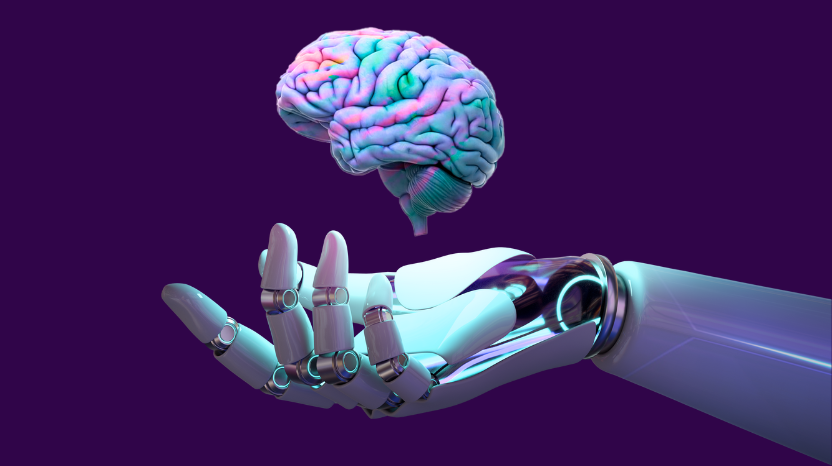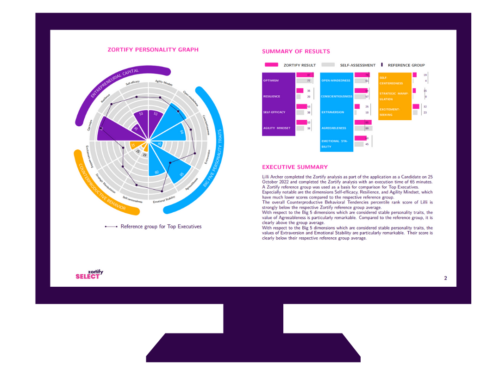AI vs. Human Intelligence
Understanding the Advantages and Shortcomings of Artificial Intelligence
Examining the differences between AI and Human Intelligence, and how they can work together to drive Innovation
Artificial intelligence (AI) has been a hot topic in recent years, with advancements in technology and machine learning leading to significant improvements in areas such as natural language processing and Machine vision. But while AI has many strengths, it also has its limitations. In this article, we will explore the capabilities and shortcomings of both AI and human intelligence and how they can complement each other to drive innovation.
Understanding AI and Human Intelligence
AI is a type of machine intelligence that can perform tasks that typically require human intelligence, such as learning, reasoning, and problem-solving. It is based on algorithms that can learn from data, identify patterns, and make predictions. Human intelligence, on the other hand, is the cognitive ability of humans to learn, reason, and adapt to new situations.
Strengths and Limitations of AI
One of the major strengths of AI is its ability to process vast amounts of data quickly. Making it useful for tasks such as data analysis and predictive modeling. AI can also work around the clock without getting tired or making errors due to fatigue. However, AI is not perfect and has its limitations. For example, AI lacks the creativity and intuition of humans, making it less suitable for tasks that require a nuanced understanding of human emotions or complex social interactions.
Augmenting Human Intelligence with AI
One of the most promising applications of AI is in augmenting human intelligence. By leveraging the strengths of both AI and HI, we can create more effective solutions to complex problems.
Unleashing the power of AI: Enhancing Human Intelligence for breakthrough solutions.
One area where AI is already being used to augment human intelligence is in the field of recruiting. Traditional recruiting processes can be biased by human judgment, leading to unfair or discriminatory hiring practices. AI, on the other hand, can help to remove bias and make the recruitment process more objective.
Revolutionizing recruitment: How AI is reshaping the Hiring Landscape
AI-powered recruitment tools can analyze resumes and job applications to identify the most qualified candidates. Without being influenced by factors such as age, gender, or ethnicity. These tools can also analyze candidate behavior during interviews. Such as facial expressions and tone of voice, to provide insights into their suitability for the job.
Eliminating Bias, enhancing objectivity: the role of AI in recruiting.
By augmenting human intelligence with AI in the recruitment process, organizations can reduce bias and improve the quality of their hiring decisions. This can lead to a more diverse and inclusive workforce, as well as increased productivity and employee satisfaction. However, it’s important to note that AI is not a perfect solution, and there are still potential risks and limitations that must be addressed.
The Synergy of AI and HI
By combining the strengths of both AI and human intelligence, we can create powerful solutions that are capable of solving complex problems and driving innovation. For example, in the field of medicine, AI can analyze large amounts of medical data and identify patterns that humans may miss. Helping doctors to make more accurate diagnoses and develop more effective treatments.
Another example is in the field of finance, where AI can help to analyze large amounts of financial data and identify potential risks and opportunities, allowing investors to make more informed decisions. By working together, AI and human intelligence can drive innovation and create new opportunities in a wide range of industries.
Conclusion
In conclusion, AI and human intelligence have their strengths and limitations, but by working together, they can achieve more than they could on their own. As technology continues to advance, it is important to understand the capabilities and limitations of AI. And how it can be harnessed to augment human intelligence and drive innovation.
NLP 101: A Beginner’s Guide to Natural Language Processing
Natural Language Processing (NLP) is a field of study that focuses on analysis and synthesis of human language. NLP is a fascinating and rapidly evolving field with a wide range of applications, from chatbots and virtual assistants to sentiment analysis and machine translation.
Building Trust with Explainable AI: Techniques & Approaches
As AI becomes more pervasive in our lives, it’s becoming increasingly important to understand how these systems work and to be able to trust their decisions. Explainable AI (XAI) is a growing field that aims to create more transparent and interpretable machine learning models.
Natural Language Processing in Business
As businesses become more customer-centric, understanding customer needs and wants is becoming increasingly important. Natural Language Processing (NLP) is a branch of Artificial Intelligence (AI) that is revolutionizing the way businesses interact with their customers.
Narcissism is widespread. Team and company success can be affected by narcissists in different ways.
Humorous, eloquent, self-confident – in short, a personality that magnetically attracts attention. You have certainly encountered such a person in your everyday professional life. Despite numerous positive effects that narcissistic persons can have on their environment, they are quickly noticed for their negative impact: The own advantage is in the foreground, bullying and harassment of colleagues are not uncommon, but also arrogant, inconsiderate and uncooperative behavior is often the order of the day.
Harvard Business manager 5/2021, Die Jungbullen kommen
Unveiling the Hidden Narcissists in Management
If you think about where you have encountered this person in your professional life, you will most likely find out that it was one or the other manager. This was also the conclusion of the study This was also the conclusion of the study we did together with Harvard Business manager and published it in their magazine in 05/2021, « Die Jungbullen kommen ». In addition to the survey of 9,918 study participants, 34 qualitative telephone interviews with exposed executives showed that many respondents had direct experience with narcissists in their own careers. Feel free to reach out to hello@zortify.com to receive the publication.
Narcissism has thus arrived in the executive ranks. Not only “old” men are the problem. Women also exhibit these traits. Comparing both sexes, it can be seen that men in all age groups have significantly higher narcissism scores on average than women.
The study also reveals a new trend that seems to confirm previous views. For example, young people whose age group is also referred to by Time magazine as the Me-Me-Me generation, i.e. women and men under 30, exhibit the strongest narcissistic tendencies in the study. Today’s socially valued values such as a high willingness to perform, self-expression, individual competition and striving for power characterize the younger generations in particular. Global competition and constant assessability through social media reinforce this effect.
Might be everywhere
Toxic narcissism at all levels – not just among managers – can have devastating effects on teams, their members and, in the long term, on companies. But the negative consequences don’t just affect financial aspects of an organization. In the following, we show what damage can be caused in companies and in teams by narcissists and how AI can help to identify narcissistic traits more quickly.
Narcissism is measurable: our NLP-based assessment analysis measures the characteristics that correlate positively, but also negatively with business success. The so-called counterproductive behavioral tendencies. Interested? Take a closer look here.
The negative consequences of narcissism for companies and teams
Narcissism is not yet widespread in the German population, the study also showed. On average, society in this country has moderate narcissism levels.
However, as soon as you change your perspective and focus on leadership and top positions, you will see a completely different picture. This is also reflected in the study. This fact is also addressed by a large number of scientific papers and articles in career magazines.
Narcissism is no longer an unknown phenomenon. However, the effects that narcissistic tendencies can trigger in teams are underestimated nowadays, even though they have long-term and negative consequences for companies.
When personal goals take precedence over corporate and team goals
The urge for recognition and attention repeatedly tempts narcissists to prioritize their own personal goals. The focus is on (short-term) success, a place in the limelight. This focus is also based on the fact that people with narcissistic tendencies find it difficult to respond to the needs of fellow human beings.
In the short term, narcissists can be successful with this behavior. But if colleagues and co-workers are not taken into consideration in the long term, the collateral damage at the team level is very high. The narcissist attributes successes of the team to him/herself. As soon as something goes wrong, however, the employees and colleagues are to blame. The interest revolves only around their own success. This has a negative impact on employee loyalty and satisfaction.
This misconduct also has long-term effects on the success of the company. Narcissists lose sight of what is important and take great risks. Key people can thus be disturbed in their own development. The company risks losing skilled employees.
If your colleague is a narcissistic leader, sooner or later the core elements of an organization will be affected. In an organization, people work together to accomplish something that cannot be accomplished alone. Narcissists undermine this cooperation. The effectiveness of an organization is reduced as a result. Decisions that are less fact-based and less oriented toward the success of the company, but rather toward quick personal success, mean in the worst-case high losses and revenue losses for the company.
Remote work: What happens when information is not passed on?
The behavior of narcissists to pursue only their own personal goals also has an impact on the way they work. Information may only be passed on to colleagues and team members who are useful in achieving one’s own goal. Important data and facts do not necessarily end up where they are needed. The remaining team members become unable to act because they need the information for further decisions and work steps.
A majority of German companies currently work with their employees in home offices. Remote work can be an optimal breeding ground for narcissistic managers. Depending on the constellation and workflow, they find it easier here to pass on information only in a targeted manner, to block the flow of information and to spin their intrigues. This can only be balanced out and prevented through good team communication and active exchange between colleagues.
Toxic Team Culture: When Narcissism Impedes Cooperation
Narcissists try to create an environment of yes-men, because it is easier for them to achieve their personal goals. Critical feedback providers are devalued, ignored – these people may only receive information under difficult conditions – and excluded. This also prevents a team from developing and growing. This leads to the aforementioned fluctuation of high potentials. The team culture is also directly affected.
Narcissistic people exert a direct influence on policies and practices that prevail in an organization. Conflict of interest guidelines, ethical behavior, teamwork – all are ignored. On the other hand, narcissistic leaders often fail to alert employees to misconduct that violates standard social norms – in some cases, this less collaborative behavior even receives recognition.
Because of such activities, further organizational damage occurs. It prevents teams from working together and makes it more difficult for them to achieve shared success. When employees are deprived of the opportunity to learn, grow and acquire new knowledge, their skills suffer. The morale and self-confidence of a team also suffer when a narcissistic leader claims collective successes for himself and blames failures on the employees. This creates a toxic team culture that can also have an economic impact on a company.
Deception and misinformation: When narcissists take it to the extreme.
If there is an intervening supervisor who can put a stop to your narcissistic leader with the help of company policies and control, you can breathe a sigh of relief. If the narcissist is higher up in the corporate hierarchy, he/she is automatically less vulnerable and can continue to enforce his/her misconduct.
Narcissistic facets such as delusions of grandeur would be a realistic option in companies led by a narcissist:in – combined with a high level of risk. This delusion could manifest itself, for example, in an aggressive and extremely reckless expansion strategy. The entrepreneurial consequences are devastating in case of failure.
You might also observe effects on the interpersonal level. Business partners who disagree or express too little praise are dropped and sent out the door with a scandal attached. The interests of employees are ignored and dismissed if they are displeased. If narcissistic persons are in a position that allows them to act freely, fraud and misinformation are a proven means of securing their own position of power and removing risk factors.
Detect narcissism faster with the help of AI.
If companies ignore this multitude of problems, they must expect high losses in several organizational areas. A study by McKinsey and Kienbaum concludes that up to 35 percent of hiring decisions are wrong. These costs alone can amount to three times the annual salary of the target position for a company.
In personnel selection procedures, attempts have been made for decades to identify such personalities (in good time) with personality tests in order to avoid organizational negative consequences. But these tests only examine the basic characteristics of a person. It is difficult to correlate these with entrepreneurial success. Since these tests rely on self-reporting by participants, they are susceptible to manipulation.
The limitations of traditional Personality Tests
With the help of Zortify and its artificial intelligence, it is not only possible to determine subclinical narcissistic character traits such as excessive self-confidence, striving for dominance or overestimating one’s own abilities. In addition to this, also the three dimensions of the dark triad (according to Delory Paulhus) – so called “Counterproductive Behavioral Tendencies” are measured: Self-centeredness, Impulsive Excitement-Seeking, and Strategic Manipulation.
Zortify: Unveiling the Dark Triad of Personality Traits
In this way, all characteristics are taken into account that can be detrimental to the company. Self-centeredness, Impulsive Excitement-Seeking, and Strategic Manipulation together make up the so-called “Counterproductive Behavioral Tendencies” here. In the context of the approach chosen by Zortify, Impulsive Excitement-Seeking is understood to be a personality tendency characterized by dissocial, antagonistic and insufficient behavior. Often caused by a lifestyle characterized by extremes.
A leader characterized in this way would, for example, relentlessly live out his or her career ambitions. Strategic Manipulation describes a scheming and ruthless pursuit of power. This behavior is detached from any moral and ethical principles. Employees at management level with a strong expression of this personality trait are prepared to forego consideration or ethical principles in favor of achieving or maintaining power. They will stop at nothing for their own advantage.
The Destructive Potential
The aforementioned character traits, coupled with unscrupulousness, are still decisive for professional and corporate success for many employees in today’s companies. The above-average manifestations of the characteristics of the dark triad are sometimes strongly represented among executives, but also in the entire leadership field. Counterproductive Behavioral Tendencies, however, are possessed by everyone.
Zortify algorithm trained with artificial intelligence incorporates insights from the analysis of the target’s written text into the assessment, which cannot be manipulated in the process. Decision-makers are thus enabled to make a better selection of candidates.
Protecting corporate success through the targeted use of AI
You will encounter personalities with narcissistic tendencies at all hierarchical levels in professional life. In the foreseeable future, this will become more and more common as younger generations exhibit high narcissism levels. The study also showed this.
If companies do not take measures in time, narcissists can cause many problems for their employees and skilled workers. In addition, a high level of organizational damage can also be expected.
In order to counteract these problems in time, narcissistic characteristics must be identified as quickly as possible. Zortify can support decision makers in this process, accelerate it and protect them from manipulation. So join our mission and let’s create an “asshole-free working environment”. Reach out to hello@zortify.com to learn more.
How Companies Get to the Bottom of Quiet Quitting
The topic of “Quitting” is stirring the HR world. People seem to be resigning in very different ways. Sometimes very officially, increasingly internally, often silently. Yet, what does it say about our work environment when people who do what is expected of them (no less, but also no more) are referred to as “Quitters”?
Quiet Thriving Over Quiet Quitting
AI’s Role in Fostering Proactive Work Culture. Every movement has its counter-movement, and this is also true in the HR sector. While “Quiet Quitting” describes a state in which employees do just the bare minimum, “Quiet Thriving” represents a concept that encourages people to actively participate and shape their own work environment.
Lead Effectively: Speak 20%, Actively Listen 80%!*
*(Spoiler: AI makes it possible)
Hand on heart: Do you know the current state of well-being of your employees? Do you understand their worries, challenges, and feelings? Do you know what truly moves them, what challenges they face, what is going well for them, and where they urgently need support?
Subscribe to Our Newsletter
Are you ready to shape the future of work and transform your HR strategies? – In our newsletter, we write about relevant topics between AI and HR and the fantastic new possibilities that artificial intelligence brings to modern People Management.
NLP 101: A Beginner’s Guide to Natural Language Processing
Natural Language Processing (NLP) is a field of study that focuses on analysis and synthesis of human language. NLP is a fascinating and rapidly evolving field with a wide range of applications, from chatbots and virtual assistants to sentiment analysis and machine translation. In this beginner’s guide to NLP, we’ll provide an overview of what NLP is, how it works, and some common applications of NLP.
What is NLP?
NLP is a branch of artificial intelligence that focuses on the processing of human language. The goal of NLP is to enable computers to understand, interpret, and generate human language in a way that is natural and intuitive. NLP involves a wide range of techniques, including machine learning, deep learning, and statistical analysis.
At its core, NLP applies computational algorithms to language data to extract meaning and insights from the data. These algorithms are designed to simulate the way humans process language, by breaking down language into its parts and analyzing the relationships between those parts.
How Does NLP Work?
NLP algorithms use various techniques to analyze and understand human language. These techniques include natural language understanding, which involves the analysis of human language to extract meaning and context, and natural language generation, which involves the generation of human-like language by computers.
Natural Language Understanding
Natural language understanding involves the analysis of text data to extract meaning and context. This involves a wide range of techniques, including:
– Tokenization: Breaking text into individual words, phrases, or other meaningful units.
– Part-of-speech tagging: Assigning parts of speech to individual words (e.g., noun, verb, adjective).
– Named entity recognition: Identifying and classifying entities mentioned in the text (e.g., people, places, organizations).
– Dependency parsing: Analyzing the relationships between words in a sentence to identify the subject, object, and other components.
– Sentiment analysis: Analyzing the emotional tone of the text.
– Topic modeling: Identifying the underlying topics or themes present in a document or set of documents.
Natural Language Generation
Natural language generation involves the creation of human-like language by computers. This can be used for a wide range of applications, including chatbots, virtual assistants, and automated report generation. Natural language generation involves a wide range of techniques, including:
– Text planning: Determining the content and structure of the generated text.
– Sentence planning: Generating individual sentences based on the content and structure determined in the text planning stage.
– Surface realization: Converting the sentence plan into actual text.
Applications of NLP
NLP has a wide range of applications in various fields, including chatbots, virtual assistants, sentiment analysis, and machine translation.
Chatbots and Virtual Assistants
One of the most common applications of NLP is chatbots and virtual assistants. Chatbots and virtual assistants use NLP algorithms to understand and respond to user input naturally and intuitively. This makes them useful for a wide range of applications, including customer service, personal assistants, and more.
Sentiment Analysis
Sentiment analysis is another common application of NLP. It involves the analysis of text data to determine the emotional tone of the text. This can be useful for a wide range of applications, including market research, social media analysis, and customer feedback analysis.
Machine Translation
NLP is also used in machine translation, which involves the translation of text from one language to another. NLP algorithms are used to analyze and understand the text in one language, and then generate the equivalent text in another language.
Conclusion
Natural Language Processing (NLP) is a fascinating and rapidly evolving field with a wide range of applications. From chatbots and virtual assistants to sentiment analysis and machine translation, NLP is transforming the way we interact with computers and each other. By understanding the basics of NLP, you can gain a better understanding of this exciting field and the many ways in which it is changing the world.
AI vs. Human Intelligence: Understanding the advantages and shortcomings of Artificial Intelligence
Examining the differences between AI and Human Intelligence, and how they can work together to drive Innovation. Learn how AI can augment human abilities in decision-making and problem-solving.
Building Trust with Explainable AI: Techniques & Approaches
As AI becomes more pervasive in our lives, it’s becoming increasingly important to understand how these systems work and to be able to trust their decisions. Explainable AI (XAI) is a growing field that aims to create more transparent and interpretable machine learning models.
Natural Language Processing in Business
As businesses become more customer-centric, understanding customer needs and wants is becoming increasingly important. Natural Language Processing (NLP) is a branch of Artificial Intelligence (AI) that is revolutionizing the way businesses interact with their customers.









